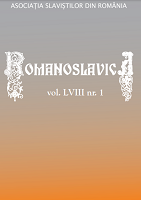BYZANTINE OBJECTS IN MEDIEVAL RUS’: A CASE STUDY
BYZANTINE OBJECTS IN MEDIEVAL RUS’: A CASE STUDY
Author(s): Elena Drăghici-VasilescuSubject(s): Archaeology, Cultural history, Social history, Culture and social structure , 6th to 12th Centuries
Published by: Asociația Slaviștilor din România
Keywords: gold pendant; Medieval Rus’; Byzantium; iconographer; Constantinople; iconography; Byzantine Masters; Egypt;
Summary/Abstract: Pieces of enamel jewellery, usually wrought in gold, appear from time to time, in addition to coins, in hoards discovered on the territory of the former Kievan Rus’. This is, for instance, the case with a cloisonné enamel and gold pendant that represent sirens; it dates to the twelfth century and today is on display within the Hermitage Museum. It was found in 1885 in Troitsky (Rylsky) Pereulok in Kiev. This particular technique (enamel) is known to have been peculiar to the area from the beginning of the eleventh century; the end of that century and the next constituted its maximum period of transmission. The paper attempts to place the production of this golden pendant in the cultural context of its time. Can Byzantine influences be detected in this work? If so, how did these reach the area? Did Byzantine artistic workshops function there, as they did, for instance, in Italy from the twelfth century on (In Italy workshops that made mosaic existed in the thirteenth century; see those in Venice producing tesserae for San Marco)?
Journal: Romanoslavica
- Issue Year: LVIII/2022
- Issue No: 1
- Page Range: 62-95
- Page Count: 32
- Language: English

